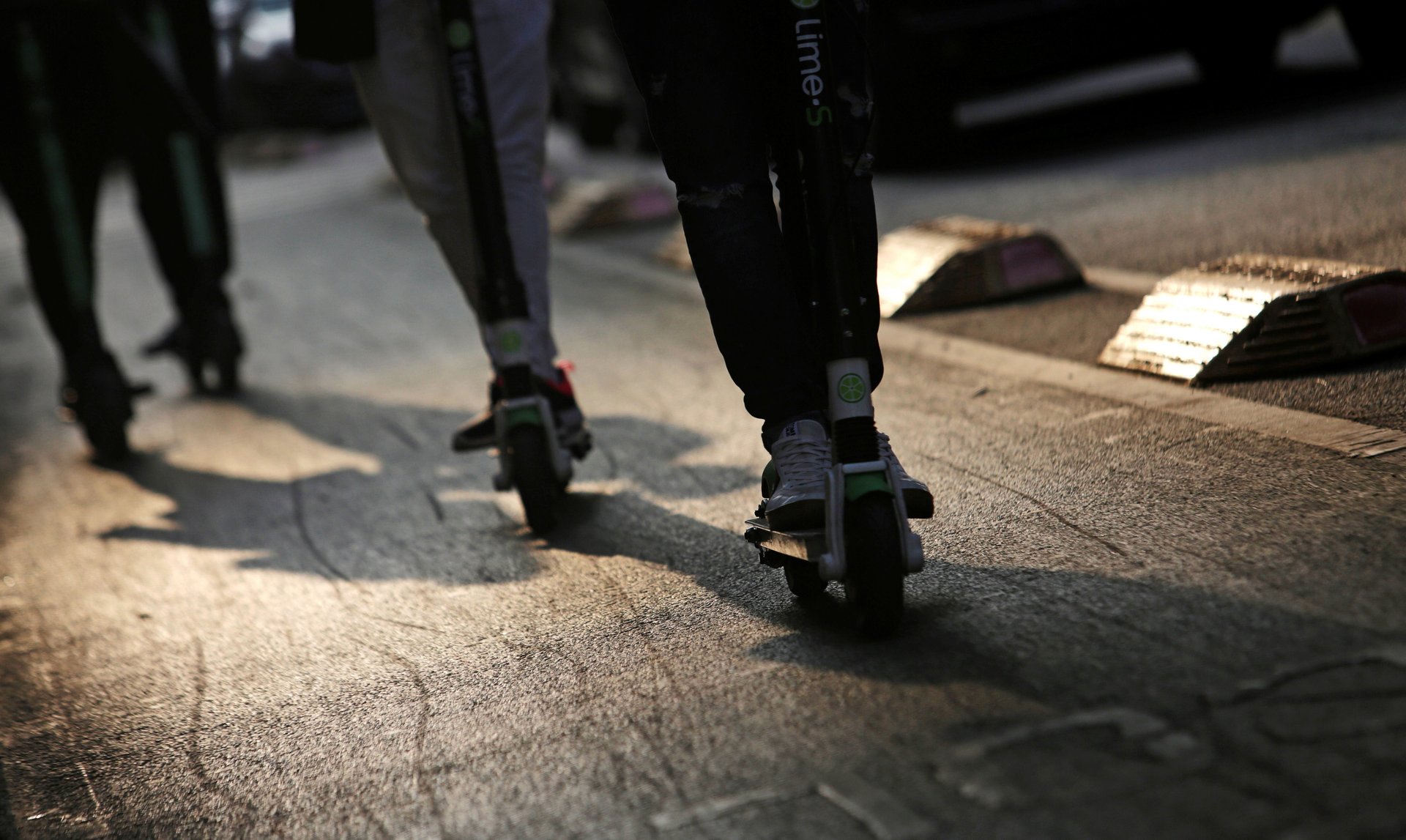Bank robbers are fleeing the scene on shared electric scooters
Ride-hail and electric-scooter companies want Americans to use their personal cars less. You know the idea has gone mainstream when even the urban bank robber is choosing shared transit over a private vehicle.


Ride-hail and electric-scooter companies want Americans to use their personal cars less. You know the idea has gone mainstream when even the urban bank robber is choosing shared transit over a private vehicle.
In September 2018, a burglar in Indianapolis, Indiana, used a Bird electric scooter to make off with a man’s wallet, laptop, and backpack. In December, a man in Baltimore, Maryland, stole a cellphone at gunpoint and fled on a Bird scooter. Also in December, a 19-year-old robbed a bank in downtown Austin, Texas, and hopped on one of Uber’s Jump e-scooters to make his getaway. Earlier this month, a bank robber in a suburb of Chicago, Illinois, took a Lyft to the bank, had it wait outside while he committed the robbery, and then took the same car to O’Hare airport.
You can see how shared transit might appeal to the inexperienced criminal: You do the deed and then ride off into anonymity on an electric scooter, a Butch Cassidy for our modern era of micro-mobility. Except it doesn’t really work that way, as the Washington Post reported:
Turning a rental scooter on, as regular users know, requires a rider to use an app that contains their phone number, email address and credit card information. You’ll probably be unsurprised to learn that these are the kinds of personal details that make it easy for police to track down criminals.
Detectives in Austin, after seeing a Jump scooter used as a getaway vehicle in surveillance footage, sent Uber a search warrant requesting geolocation data and user information. The company provided a phone number, email address, and credit card number. Police arrested Luca Mangiarano, 19, and charged him with robbery by threat about a month after his alleged crime. “This was a learning experience for me and the robbery unit,” Austin police detective Jason Chiappardi told the Washington Post. “We had never had a scooter involved in a robbery.”
It took police less than five hours to find and arrest Jonathan Decorah, 43, after he allegedly robbed a bank in a Chicago suburb of nearly $6,000. Decorah took a Lyft to the Ben Franklin Bank of Illinois around 9:30am on Feb. 9. The Lyft, a white car with a ride-sharing sticker, waited outside while Decorah robbed the bank—it’s unclear if the driver knew what was going on—and then took him to the airport after he hopped back in and updated his trip destination to the United Airlines terminal at O’Hare. On the way, Decorah reportedly asked if there were any Chase banks they could stop at. The driver said no.
Oh and then there was this guy:
ROCHELLE PARK, NJ (Gray News) - A man attempting to burgle a New Jersey home fled when he woke the victims, but he didn’t make it far before accidentally getting into a police car instead of the Lyft he had ordered.
These stories border on the absurd, and yet they really happened! Did Mangiarano think Jump wasn’t using the same software he rented the scooter with to track his location? Did Decorah imagine Lyft could be his very own Baby Driver? Shared rides and scooters create an illusion of stealth and anonymity—you may never see the same driver or scooter again—but never forget that they are tracking you. (Related: company-issued Fitbits.) If all our bank robbers traded private vehicles for ride-hail and shared electric scooters, we might never have trouble catching a thief again.
An earlier version of this post appeared in Oversharing, a newsletter about the sharing economy. Sign up for it here.